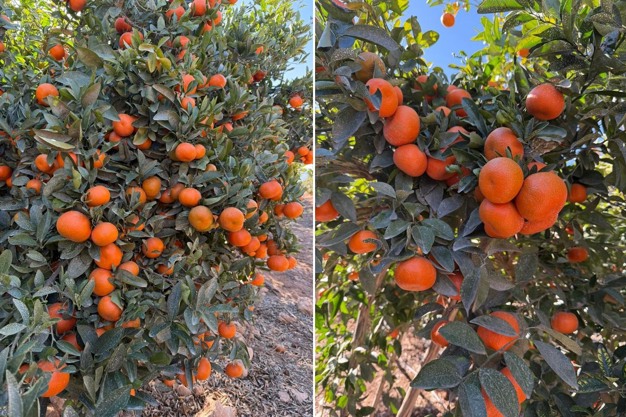California’s mandarin supply is gradually winding down and harvest will likely wrap up in the last week of May or the first week of June. “This is in line with what we expected or perhaps a bit earlier,” says Miles Fraser-Jones with Sierra Produce. There is already less fruit available in the market as some California grower-shippers are holding back fruit in order to be able to continue supplying their retail programs into June. “As a result, we are noticing an improvement on the market conditions, which is positive for southern hemisphere citrus,” Fraser-Jones said.
While California is winding down, South America has started shipping. At the end of this week, Sierra Produce expects the first Clemenules from Chile to arrive on the U.S. East Coast, followed by the first citrus from Peru next week. Fruit from South Africa is about a week to ten days delayed due to climatic conditions, but the first shipment with Nules Clementines should arrive in week 23 or 24. “All in all, it should be a good transition and market conditions are expected to continue to improve going into June.”

Navel oranges
Harvest of California Navel oranges finished about two weeks early, but fruit will be available in the market until the end of June. Just like the easy peelers, a good transition is expected for Navels as the first arrivals from South Africa are scheduled for the last week of June. “Around the time when California Navels disappear from the market, South Africa Navels will be here and carry on,” Fraser-Jones commented.
Grapefruit
While California grapefruit is always available, domestic supply is more abundant when Texas is in the market. Sierra Produce brings in Star Ruby grapefruit from South Africa with the first arrivals to be expected around mid-June. “Timing is favorable as Texas grapefruit will have ended by then.”
Lemons
Argentina is the world’s largest lemon grower and is in season now. However, due to significant rainfall, the lemons have a large size profile, which is not ideal for the U.S. market. Argentina is taking advantage of favorable market conditions in Europe and ships large volumes over there this season.

Nadorcotts.
Tariffs
Other reasons Europe may be favored over the U.S. are tariffs and shipping costs. “For containers coming into the U.S., rates have increased astronomically due to container shortages,” shared Fraser-Jones. Tariffs also play a role as produce from Argentina and other South American countries is subject to a 10 percent charge. This is another reason the country focuses on exports of lemons to Europe this season. The impact on other citrus varieties is expected to be more limited as there aren’t as many alternatives available for South America.
Import tariffs from South Africa were initially a sweeping 30 percent, but have been paused until July 9 as the country engaged to negotiate with the U.S. During the 90-day pause, a 10 percent blanket duty has been kept in place. If negotiations turn out to be unsuccessful, the 30 percent tariff rate will become effective as of July 10. During the 90-day pause, South Africa still continues to support the U.S. market because it is a good outlet for them. “South Africa is a significant citrus player and prefers to diversify their shipments into different markets. Not sending fruit to the U.S. would result in the flooding of other markets.” On top of that, lots of other markets also impose tariffs on South Africa. While the growers will bear the brunt of the tariffs, 10 percent doesn’t seem to defer them from shipping citrus to the U.S. this season.
 For more information:
For more information:
Miles Fraser-Jones
Sierra Produce
Office: (+1) 856-228-5500
Cell: (+1) 856-693-2217
Email: [email protected]
www.sierraproduce.com
Source: The Plantations International Agroforestry Group of Companies
